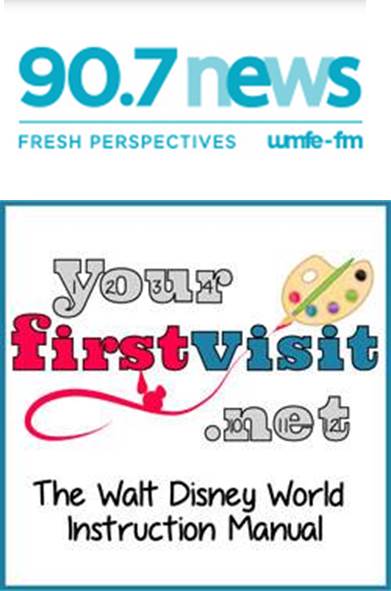NPR Looks for Sound Disney World Opinions, Finds Me Instead
By Dave Shute

A couple of parts of the interview are being broadcast in Orlando this morning, and you can also listen to one from the “Play Audio” link here.
(As unlikely as it seems, this is not an April Fool’s joke. My April Fool’s post for this year is here.)
I had fun chatting with reporter and host Amy Kiley about the ride, and even more fun preparing for the interview. It’s an easy ride to take for granted–it’s been at WDW more or less unchanged since its 1971 opening, and at least for adults doesn’t have a high re-ride factor.
But on this site, I try to look at things from the perspective of first time visits by families, and small world really is a good ride for kids.
- First it’s about the only Disney ride I can think of that is about its audience. Other rides are about fictional characters or settings. The basic gaze of it’s a small world is kids looking at kids.
- Second, it’s got most of the elements kids enjoy–miniatures, music, movement, color, toys, etc.
- Third, there’s the song. It is clearly a children’s song–a round–and the familiarity of the genre broadens its appeal to kids. Plus, as any parent knows, little kids in particular like repetition.
The appeal of the ride is thinner for adults–but they can be impressed by how well it achieves what it sets out to do. In the olden days, critics used to talk about “unity”–about how the chosen and crafted parts of an aesthetic object created and contributed to its whole effect. By this standard, it’s a small world is remarkable. I could go on and on about this–I did work on a PhD in English literature, you know, before I came to my senses and got an MBA–but just a quick point:
The narrative of it’s a small world comes from setting expectations and then fulfilling them in delightful and surprising ways. At first, the visuals and song carry their plain meaning, but with repetition, and the song appearing in many languages, the deeper points of the ride–celebration of both similarity and difference, and finally celebration of similarity because of similar differences–emerge.
On the first ride, adults can simply enjoy the show; on their second ride, they can marvel at how well it is crafted. Some of the best ever worked on it–Walt Disney himself, Mary Blair, Rolly Crump, Alice Davis, Marc Davis, Blaine Gibson–and you can tell.
And then there’s that song–I did admit to NPR that it was “catchy.”
More than any other attraction I can think of, the song makes the whole thing work, both carrying and reinforcing the meaning. Literally unforgettable, the only way I’ve been able to make its presence absent when it enters my head is to transform it–singing the lyrics of small world to a different melody, the bass line of “Love Shack.” (You’ll need to add some “Baby” and “Baby Baby”s to make it scan.) Try it yourself!
Follow yourfirstvisit.net on Facebook or Google+ or Twitter or Pinterest!!



0 comments
Comment by typing in the form below.
Leave a Comment | Ask a Question | Note a Problem